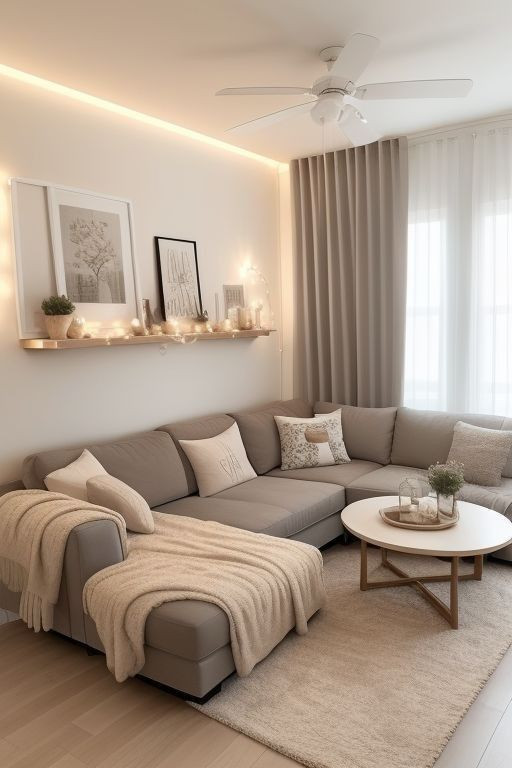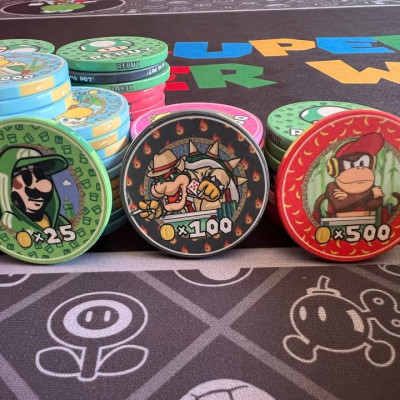Layered & Textured Living Room Elegance: Creating a Space That’s Cozy, Sophisticated, and Full of Character
In interior design, texture is the unsung hero — the quiet force that transforms a flat, lifeless space into something that feels warm, inviting, and effortlessly stylish. When you walk into a living room that’s layered with texture, you instantly feel it — the soft embrace of a plush throw, the visual intrigue of a patterned rug, the warmth of wood grain, and the cool touch of ceramic or stone. This is the art of Layered & Textured Living Room Elegance — a design approach that combines comfort, depth, and sophistication.
If you’ve been craving a living room that’s both welcoming and breathtaking, this guide will walk you through the key principles, elements, and tips for mastering the layered look in your own home.
Why Layering & Texture Matter in Interior Design
Texture is all about how things feel and look — and in design, it’s crucial for creating balance and visual interest. Without texture, a space can feel sterile or unfinished. Too much texture without balance, and it can feel chaotic. The sweet spot is found in thoughtful layering — where different materials, finishes, and patterns work together in harmony.
In a layered and textured living room, you’re not just decorating; you’re telling a story. Each textile, piece of furniture, and accent adds a different “chapter” to that story — a woven rug may speak of artisanal craftsmanship, while a glossy marble coffee table might bring in a modern twist.
Core Elements of a Layered & Textured Living Room
To create a rich, layered look, you’ll want to mix and match different materials, patterns, and finishes across multiple surfaces. Here are the essential building blocks:
1. Textiles: The Foundation of Coziness
Textiles are one of the easiest ways to add texture. They soften the space and make it more inviting. Think:
Throw pillows in velvet, linen, faux fur, or embroidered cotton.
Blankets and throws draped over armchairs or sofas.
Area rugs with varying pile heights — a Moroccan shag for plushness, or a flat-weave kilim for rustic charm.
Curtains or drapes that add depth — linen for an airy look, velvet for luxury.
2. Furniture with Character
Furniture should offer a mix of tactile and visual textures.
Combine wood (natural grain or distressed) with metal accents.
Incorporate upholstered seating in a rich fabric alongside a leather armchair for contrast.
Opt for coffee or side tables with interesting finishes — from stone and marble to hammered metal.
3. Layered Lighting
Lighting adds its own form of texture through shadow and glow.
Ambient lighting from overhead fixtures or recessed lighting.
Task lighting from reading lamps or adjustable sconces.
Accent lighting like LED strips behind shelving or soft candlelight.
Mixing light sources not only makes the room functional at all times of day, but also highlights the layers and materials in your design.
4. Natural & Organic Elements
Bringing in nature always enhances texture.
Wood beams or wall panels for architectural warmth.
Plants in varying sizes — leafy palms, trailing pothos, or textured cacti.
Stone or brick accents to ground the space and give it a timeless quality.
5. Decorative Accents with Personality
Details make the difference. Consider:
Ceramic vases with a matte glaze.
Woven baskets for storage that doubles as décor.
Layered wall art with mixed media — framed prints, tapestries, or even macrame.
The Art of Layering: How to Do It Right
Layering isn’t about piling on random textures — it’s about intentional contrast and balanced repetition. Here’s how to do it:
Step 1: Start with a Neutral Base
Choose a base color palette that’s calming and flexible — think warm whites, beiges, or soft grays. This creates a backdrop where textures can shine without overwhelming the senses.
Step 2: Add Contrasting Materials
Mix smooth with rough, matte with shiny, and soft with hard. For example:
Pair a sleek glass coffee table with a chunky knit throw.
Place a smooth leather sofa on a textured jute rug.
Step 3: Play with Pattern & Scale
Patterns also count as texture — especially when they’re layered.
Use large-scale patterns (like a bold geometric rug) alongside smaller prints (like delicate floral cushions).
Keep colors cohesive so patterns feel harmonious, not chaotic.
Step 4: Create Layers in Every Direction
Layering isn’t just about stacking objects; it’s also about varying height and depth.
Layer rugs — a smaller patterned rug over a larger neutral base.
Stack coffee table books under a decorative object.
Hang art in clusters at varying heights instead of a single row.
Color & Texture: The Perfect Partnership
While layering is often about material contrast, color plays an equally important role. The safest and most elegant approach is to use a tone-on-tone palette — different shades of the same color family — to keep the space cohesive.
For example:
A blush velvet armchair paired with a dusty rose throw pillow and a cream-colored shag rug.
Earthy tones — terracotta vases, beige linen curtains, and walnut wood accents — that feel grounded and natural.
Styling Tips for Effortless Elegance
Here are some pro tips to take your layered living room from “nice” to “magazine-worthy”:
Don’t forget negative space – Give your eye places to rest between heavily textured areas.
Mix old with new – A vintage rug alongside a modern sofa creates instant character.
Use mirrors strategically – They reflect light and double the visual depth of your design.
Think seasonal swaps – Change throws, pillows, or flowers to keep your space feeling fresh year-round.
Stay true to your lifestyle – If you have kids or pets, choose washable slipcovers, durable rugs, and sturdy furniture.
Why Layered & Textured Design Feels So Good
When you step into a well-layered, textured living room, you’re engaging all your senses. You see the richness of materials, feel the softness of fabrics, hear the quiet comfort of a space that’s been thoughtfully put together. It’s not just about looks — it’s about creating a home that feels alive.
A room layered with texture doesn’t just showcase your style — it tells your story. Each throw pillow, book, plant, and photo frame adds a personal touch that makes the space uniquely yours.
Final Thoughts
Layered & Textured Living Room Elegance is more than a trend — it’s a timeless approach to making your home both beautiful and comfortable. By combining materials, colors, and finishes with intention, you can create a living room that’s warm, inviting, and endlessly stylish.
Whether you’re starting from scratch or refreshing your current space, remember: the magic lies in the mix. Start with a base you love, add textures that speak to you, and don’t be afraid to let your personality shine through every layer.






